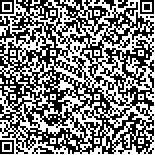下载中心
优秀审稿专家
优秀论文
相关链接
摘要

水体体散射函数是描述水体中光在各方向散射特性的一个重要的固有光学参数,对水色遥感、水环境监测与保护、海气交互过程研究、水下军事目标跟踪等领域具有十分重要的意义。水体体散射函数测量尤其是覆盖0°—180°范围的广角体散射函数测量技术起步较晚,直接测量难度较大,一直以来都是一个棘手的科学难题。本文梳理了国内外广角水体体散射函数测量技术的发展历程,对于广角体散射函数测量技术,从原理上大致可以分为单一探测器转动式、多个固定探测器阵列式以及面阵CCD成像式等3大类,对不同测量原理下的测量技术进行详细分析,并对广角水体体散射函数测量技术在海洋生物光学、气泡跟踪、水色遥感等方面的相关应用进展进行总结和归纳,并对未来广角水体体散射函数的发展趋势和应用前景进行展望。
In ocean optics, a Volume Scattering Function (VSF) is a fundamental inherent optical property parameter that describes the angular distribution of light scattered from an incident beam, and has considerable significance in studying ocean color remote sensing, underwater light radiation transmission, water environment monitoring and protection, air-sea interaction, and submarine target tracking. Despite its fundamental nature, the variability of the VSF is rarely reported, especially from 0° to 180° (i.e., general angle). This condition is mainly due to the extreme difficulty of performing direct measurements of general-angle VSF. With more than 50 years of development, the measurement technique of general-angle VSF remains in its infancy and is still being explored and improved. This study summarizes the research progress of measurement technology and application of the general-angle VSF of water and discusses the development status quo and the tendency of measurement technology and its application of general-angle VSF of water.
On the basis of the measuring principle, the measurement technology of VSF can be divided into "mechanical rotating measurement by a single detector," "synchronous measurement by array detectors," and "photographic measurement by a plane array Charge-coupled Device." The first instruments dedicated to measuring the general-angle VSF of water samples were developed in 1950-1960 and were still used up to this day. The principle of these instruments was principally based on either a light detector or a light source rotating around the sample volume. The angular distribution of scattered light can be measured with the rotation of a single detector or light source (or prism replacing the detector). The angular resolution of these instruments can reach 0.3°, regardless of measurement speed and data synchronization, and these instruments cannot be used in situ. Since the early 1990 s, the second-generation general-angle VSF instruments were built because of the significant advances in the fields of oceanic, optical, and electronics technology. This type of general-angle VSF instruments (referred to as "in situ concept" instruments) uses an array of several detectors that are located in the same plane with a monochromatic light source, which completes a rapid full measurement of VSF within 10 ms, and the angular resolution of these instruments can reach 10°. Some researchers have proposed a new optical approach to measuring the general-angle VSF through image detection. This type of instruments (operates in a laboratory environment) uses a combination of two reflectors and a CCD camera without changing the detector sensitivity and without moving any optical part, thereby allowing the simultaneous measurement of VSF at various angles with a few seconds.
The application of direct measurement technology and instrument of general-angle VSF has gradually expanded to the bio-optical model, bubble trace, remote sensing of ocean color, radiative transfer, and upper-ocean heat balance. In the future, the direct measurement technology of general-angle VSF will play an important role in applying oceanic optics and its related field with the increase in application requirements and progress of measurement technology and theoretical methods.

